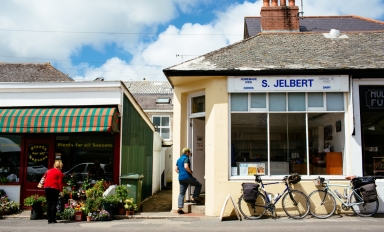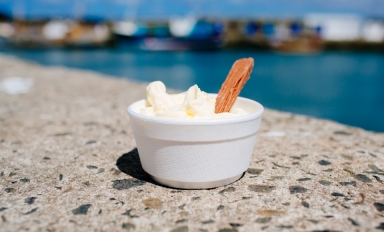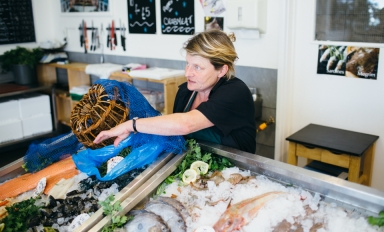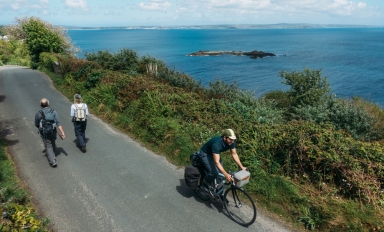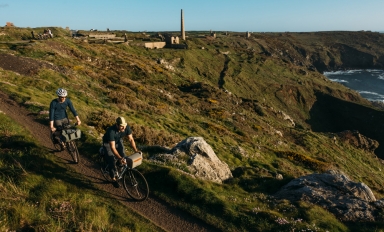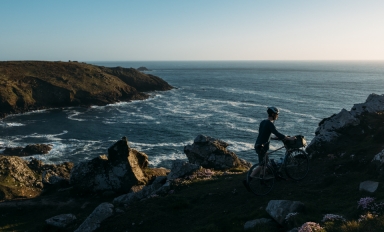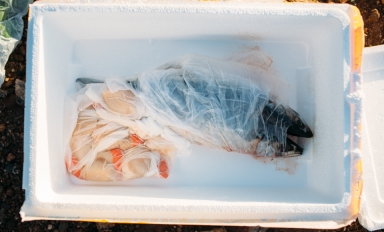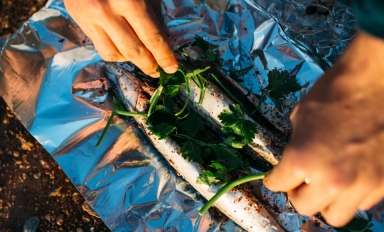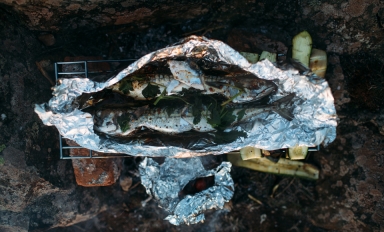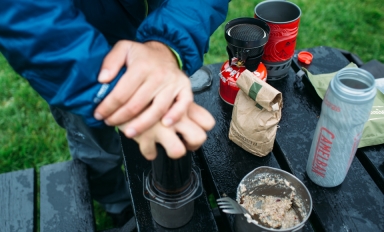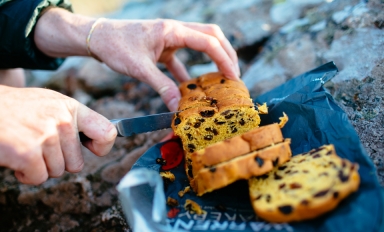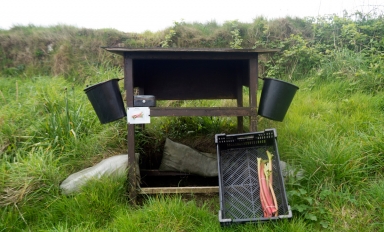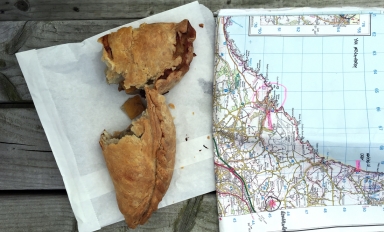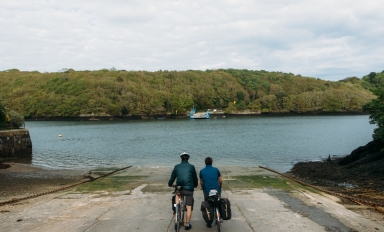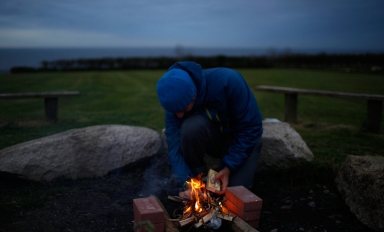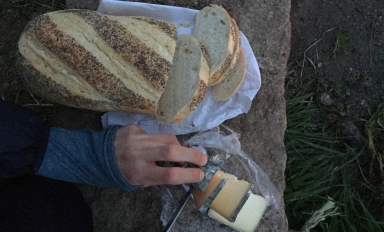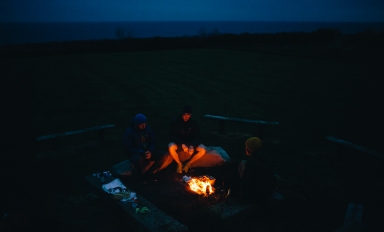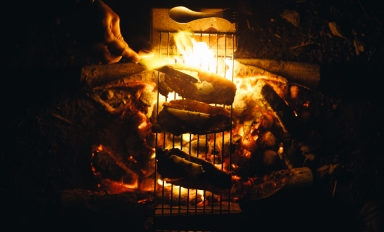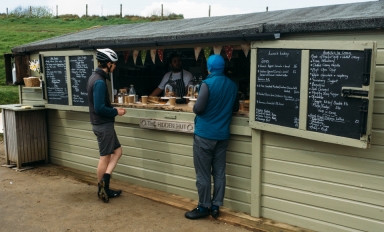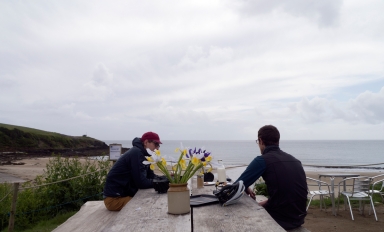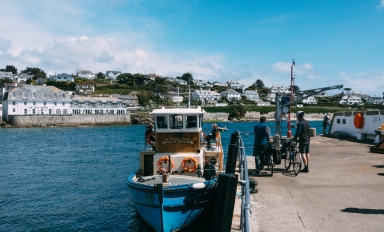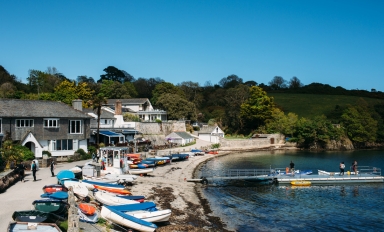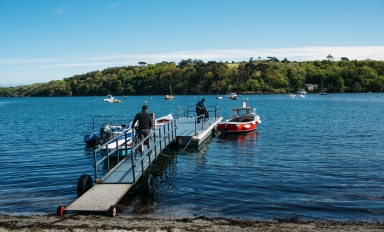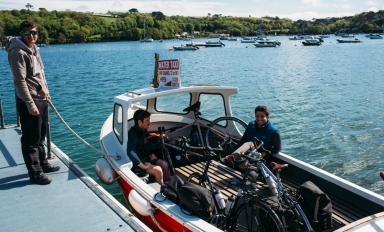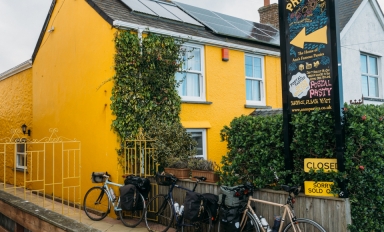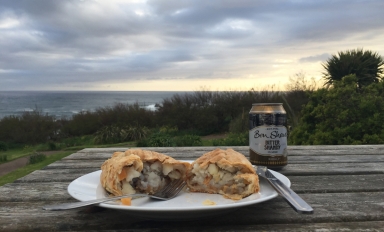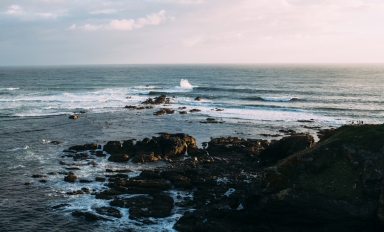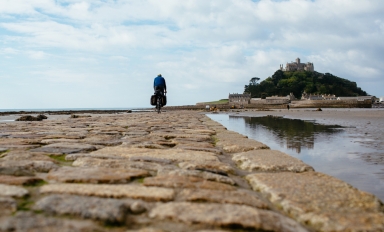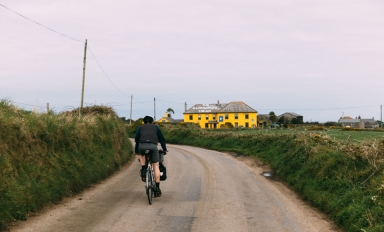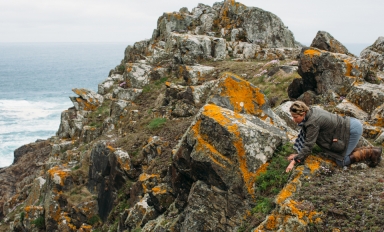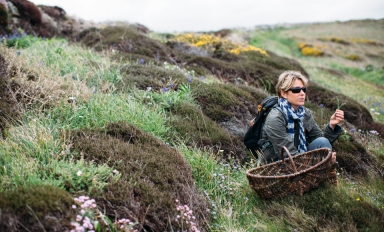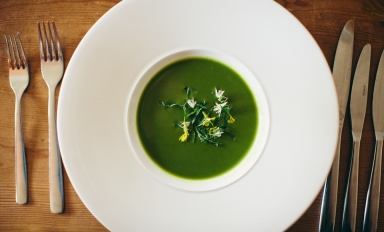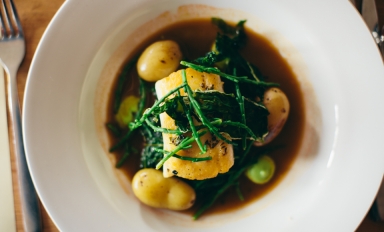Cornwall’s 700km coastline and lush rolling lands mean the Cornish peninsula has a natural larder boasting the very best quality seafood, meat, dairy products, crops, and wild food. With these world-class ingredients making their way into the hands of food makers, food entrepreneurs and chefs, it is no surprise that Cornwall is in the midst of a food revolution; a revolution led by the likes of celebrity chefs Rick Stein and Nathan Outlaw who are encouraging a wave of popularity for Cornish produce and eateries, especially at a time when food provenance is high on the agenda.
Harry, Danny and I booked return train tickets to Penzance – for four days we would see where the road took us…
“You should have got here first thing in the morning!” stressed the lady at Stevenson fishmongers as we asked for some mackerel to cook on the fire we planned that evening. “Everything comes fresh from the boats in Newlyn Harbour just across the road…”
“Yeah, unfortunately this was the earliest we could have got here; we were on the 7am train down to Penzance and had to stop at Jelbert’s for a vanilla ice and clotted cream pot!”
“Well, you should take two of the mackerel and some our our scallops – they are really big ones so two each should be fine. Do you want the mackerels filleted?”
“No, whole please! Oh, and could we have a pot of the Cornish Sea Salt, one of your cool boxes, and some ice? We need to strap the seafood to the back of our bikes for the 30km ride along the coast to St Just where we are pitching the tents and finding somewhere to cook…”
“Sure – that’ll be £1 extra, if you don’t mind. Here you go. Enjoy it. There will be a hell of a sunset on the west coast tonight…”
The extra £1 was a no brainer – carrying fresh food, in addition to our existing gear, would turn out to be the main logistical battle we faced over the next four days. At Newlyn harbour, having only ridden a couple of kilometres along the coast, we decided to fully load my bike and leave the top of Harry’s free for strapping whatever we picked up, from the fishmonger’s cool box to a 3kg bag of charcoal…
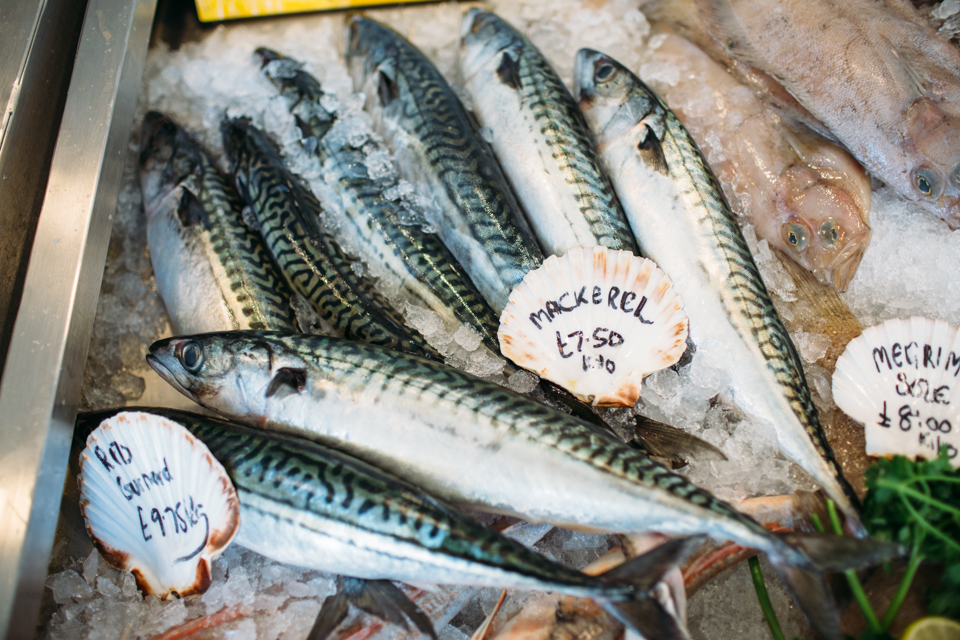
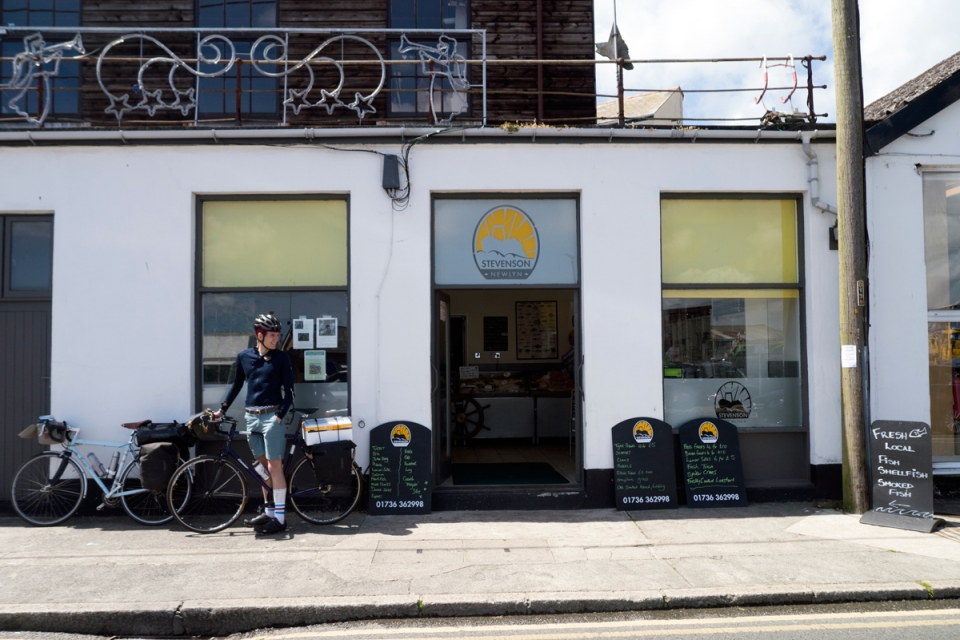
DAY 1 | Penzance-St Just
“Coast”
Jelberts Ice Cream
Stevenson Fishmongers
Cornish Sea Salt
"...we noticed how steep it was when Harry’s Garmin auto-paused."
The “DO one thing well” mantra echoed around the modest walls of Jelberts in Newlyn: one counter; one tub of vanilla ice cream; and one pot of clotted cream. The only option available was how to combine the two. For us, a pot was easier than a cone because we could just pop them into our handlebar bags whilst we rode around to the harbour front to eat them. As we sat there with our delicious ice creams, made to a secret local recipe by the Glover family’s dairy farm, it was easy to imagine the harbour-side bustle earlier in the day as the boats come into one of the UK’s largest fishing ports with their catches. Even then, in the calm after the storm, forklifts were busy dumping used ice into the harbour waters, and the flocks of seagulls squawked frantically.
With the evenings seafood from Stevensons strapped safely to Harry’s rack, we set off pedalling west along the coast. Mousehole was the first port of call – one of the many quaint Cornish villages whose harbour wall shelters a fleet of small fishing boats that head out to feed the demand for Cornish seafood and were now bobbing around in the afternoon sunshine. Riding up out of Mousehole and along the quiet coastal roads, Harry and I were quickly reacquainted with the ‘Cornish Mile’ – a much longer and steeper version of a traditional mile – as the roads track the relentless rolling hills and coastline. Riding out of Lamorna Cove was the steepest section of the day; we noticed how steep it was when Harry’s Garmin auto-paused. Even after our first day’s short ride, we were ready for our seafood dinner.
Once we had met Danny (who had arrived into Penzance on a later train) in St Just’s central square, we pitched our tents at
the welcoming Secret Garden campsite in Bosavern before riding, with our cooking equipment and down jackets, in search of a beach to cook on. However, after following the South West Coast Path for a while, through the remains of the Botallack tin mines, we soon realised how inaccessible the coves and beaches along the coastline were; with the evening light against us, we resorted to finding a spot on the cliff tops. Experienced local knowledge of the rugged coastline ruled here – don’t expect to get down to the sea that easily on a whim.
Having slowly collected kindling and small firewood over the course of the day, we cracked straight on lighting a small fire and preparing our food. We gutted and washed the Mackerels before seasoning them with lemon, the amazing ‘Pepper’ Cornish Sea Salt, and lots of parsley. Once the fire was the right temperature, we started the fish on the grill and, after a couple of minutes on each side, foil parcelled them up with more seasoning and put them on the ember bed. Danny opened a variety of St Austell Brewery beers in the meantime and we handed them around as we listened to the sea crashing below us and fish parcel bubbling away. Ten minutes later, and a sneaky peek, told us it was OK to get the three sporks out and tuck in – the delicious moist flesh scraped easily off the bones as the sun went down over the Celtic Sea horizon. There is no doubt that the mackerel tasted even better because of our location on the remote Cornish cliff tops.
Once everything was polished off we headed off too, leaving no trace, back into the darkness along the Coast Path. On the way back to the tents, we stopped in at one of the many pubs on the main square in St Just for a nightcap…
“For Stein and Outlaw…a love affair with fish has dominated both their cooking…and they will both say there’s no better place to cook fish than Cornwall because the ingredients on their doorstep are simply the best in the world…”
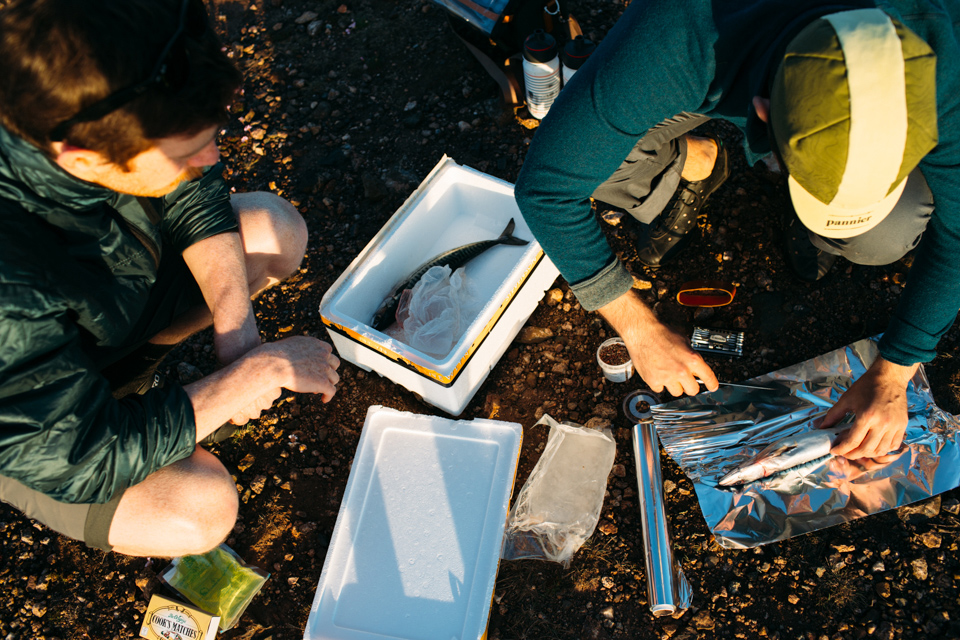
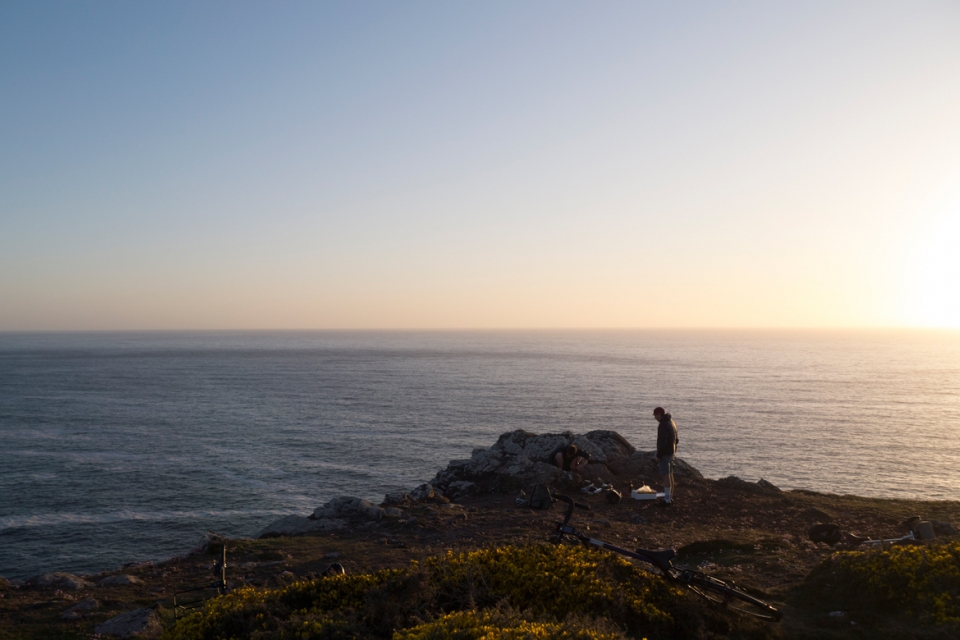
DAY 2 | St Just-Portscatho
“Land”
Saffron Cake
Honesty Boxes
Etherington’s Farm Shop
Trevethick Pastys
Skinner’s Brewery
Cornish Blue
Cornish Yarg
We awoke early the next morning to grey skies and drizzle. Packing up a wet tent knowing you need to sleep in it the next night is a bit of a downer, but that’s life on the road. We had a Saffron Cake, muesli and Monmouth coffee breakfast, and one of the finest stretches of road in the UK ahead of us, to look forward to.
St Ives was our first checkpoint, just over 20km along the coast; the road there, winding through the coastal farms and moorlands, did not disappoint – especially at this time of year when the swathes of golden gorse brightened up our coastal surroundings and the wafts of wild garlic – almost strong enough to cover up the campfire smoke on our clothes – drummed up our appetites. There were not many junctions and farm entrances along this remote stretch but, where they existed, Cornwall’s Honesty Boxes cropped up offering anything from fresh eggs to rhubarb.
Upon reaching a busy St Ives, we explored the narrow cobbled streets astonished at the number of bakeries and pasty shops.
We could have spent a whole day there: the seafront; Porthminster beach and Café; and the Tate gallery, but we were keen to crack on. On our way out we stocked up on some iced Saffron buns to fuel our next stage towards Truro. Saffron is said to have landed in Cornwall, and Cornish baking, when Phoenician traders sailed here to exchange spices for tin. The precious spice takes 50,000 flowers to make 500g, making it more expensive, by weight, than gold. It was nice to eat, but the attractive golden colour was the best thing about it.
After riding north along the dramatic Godrevy Heritage Coast, it was at the fishing village of Portreath where we took a 90 degree turn south-east, away from the coast we had followed from Penzance. A change of direction also meant a change in the scenery to lush rolling hills as we headed inland in search of Etherington’s Farm Shop. Tall Cornish Hedges and hedgerows became a prominent feature of the roadsides and farming landscape. Later we learned that the hedgerows are, amongst other things, a time honoured way for farmers to break the prevailing westerly winds that blow off the sea.
"...the swathes of golden gorse brightened up our coastal surroundings, and the wafts of wild garlic - almost strong enough to cover up the campfire smoke on our clothes - drummed up our appetites."
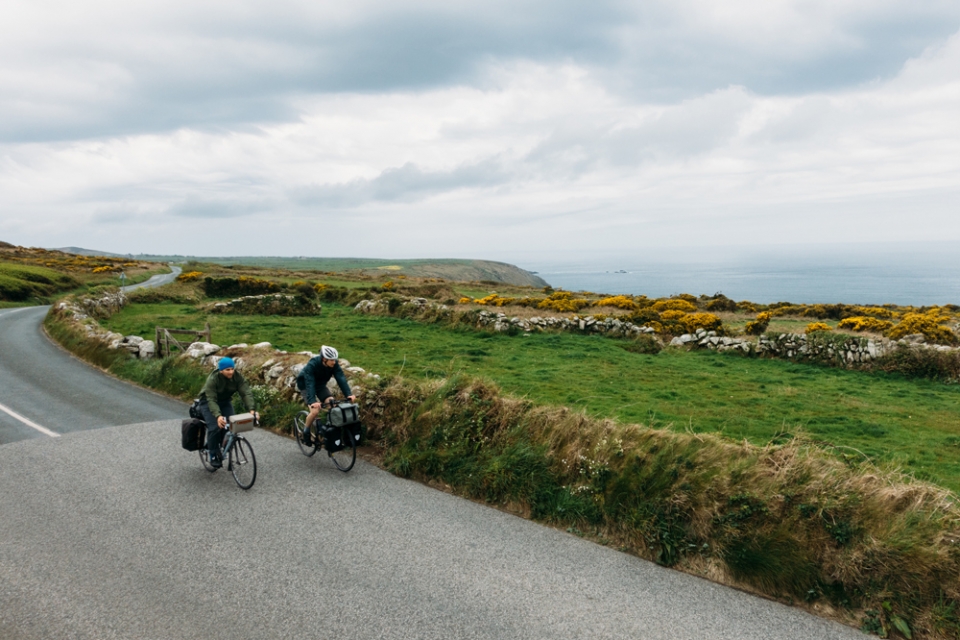
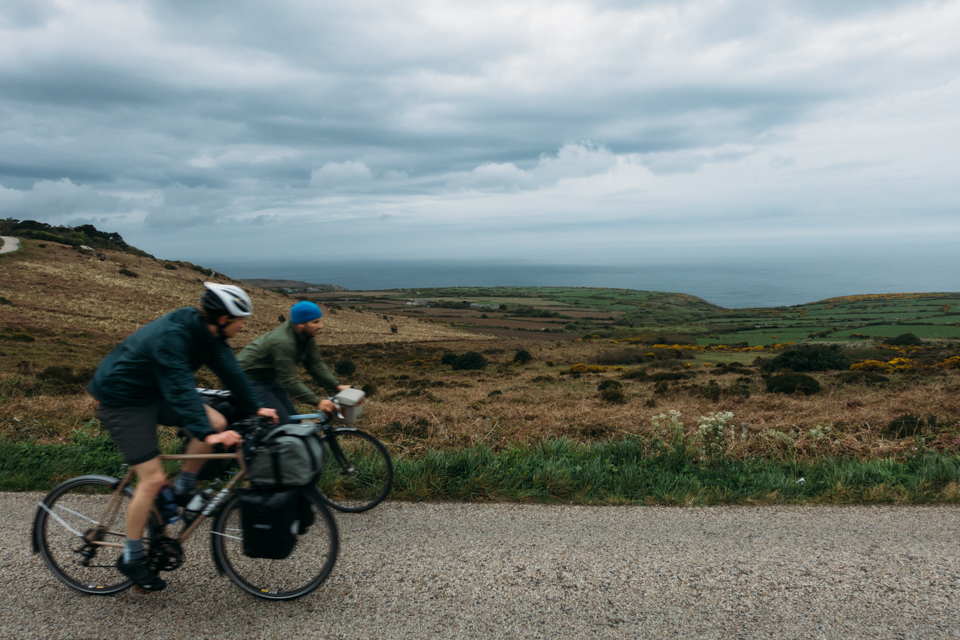
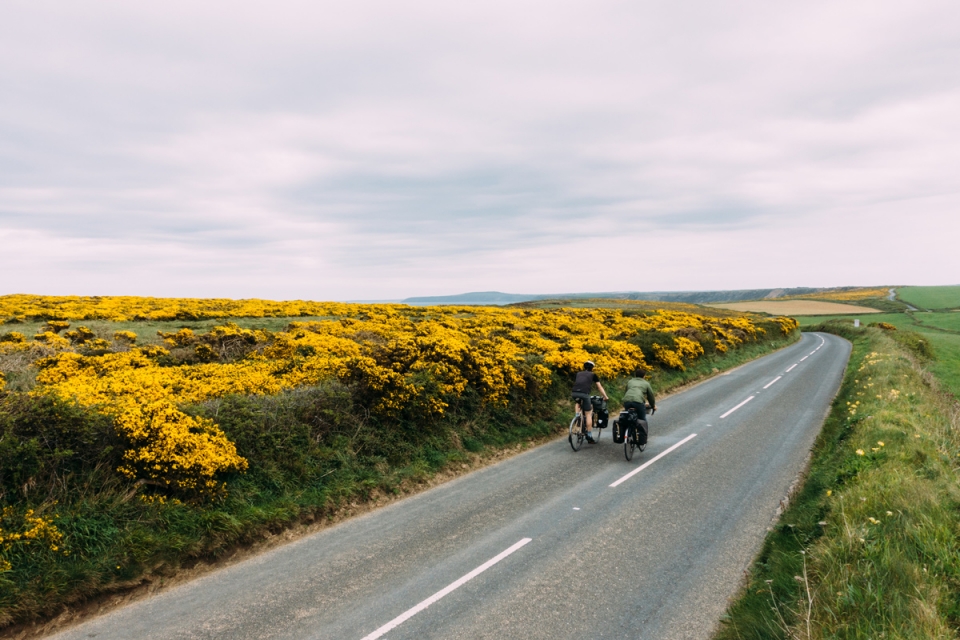
We eventually made Etherington’s Farm Shop in Wheal Rose via a warren of single-track roads and gravel tracks, for a late Cornish pasty lunch. The Farm Shop seeks out and stocks locally sourced, quality Cornish produce and is part of a larger meat and butchery company that has supplied the very best locally reared meat since 1954. We spent a while looking around and picking up our evenings dinner from the meat and cheese counters, before spying the Trevethick Pasty hatch. The pastys, handmade by Ian Trevethick on site, supply many of the cafés and shops throughout Cornwall and are also available to buy fresh from the oven. We took three outside to eat on the picnic benches overlooking the rolling Cornish countryside. The pasty was well worth the wait – packed full of potato, swede, onion and beef – the calorie-filled lunch was ideal for fuelling the rest of our afternoon’s cycling. If the pasties had been any bigger, we wouldn’t have finished them in one sitting, so it was easy to see why they became a staple amongst the mining workers who made them popular in the 19th Century. It was they who gave Cornish pasties their distinctive ‘D’ shape and crimped edge to one side, which are now key characteristics of their Protected Geographical Indication (PGI) status. The crust was supposedly used as a handle to prevent contamination from ‘mining’ hands, which they would then throw away at the end. I am sure most people ate the whole thing…
In Truro, we stocked up on charcoal, and some classic Betty Stogs and Cornish Knocker ales after a brief visit to Skinners’ brewery on the river. With the beers stowed in each of our bottle cages, we rode on along the green lanes that negotiated the leaf vein-esque Fal river network, to the King Harry Ferry. One of only five chain ferries in the UK, the 300m crossing has saved the hefty detour from Feock to the Roseland
Peninsula since 1888.
On the other side, we cycled the last 12km to Arthur’s Field campsite just outside Portscatho. Debs, who ran the campsite, greeted us on our arrival – she liked it when cyclists showed up. As we put the tents up, we thought we had struck gold with a great campsite when Debs not only brought us over three mugs of tea but let on that she had a purpose built fire pit overlooking the sea. We invited Dan, who was pitched next door, to join us – he was two weeks into a three-week trip walking the South West Coast Path, so it was great to hear his take on exploring the same region on foot, at a (slightly) slower pace.
Whilst we waited for the fire to warm up, we cracked open the Betty Stogs’ and cut up the novel Cornish Yarg cheese as a starter. It was interesting to taste as we all dodged the fire smoke – deliciously mild and creamy but slightly crumbly at its centre. Yarg, with its signature handpicked nettle skin was created in the 1980’s by The Gray’s (Yarg, backwards) and is now hand-made in open vats by dairy farmers at Lynher Dairies, just outside Helston.
Our dinner was deliciously simple. We grilled the chunky Etherington’s sausages, eating them directly off sporks, before grilling the steaks and melting the Cornish Blue cheese on top at the last minute. We also foil cooked the cabbage leaves, seasoned with the Cornish Sea Salt, to have with it. Made high up on Bodmin Moor by dairy farmer Phillip Stansfield, Cornish Blue was the perfect accompaniment for the steaks as it is softer and milder than traditional blue cheeses.
We all chatted until the fire died.
"As we put the tents up, we thought we had struck gold with a great campsite when Debs not only brought us over three mugs of tea but let on that she had a purpose built fire pit overlooking the sea."
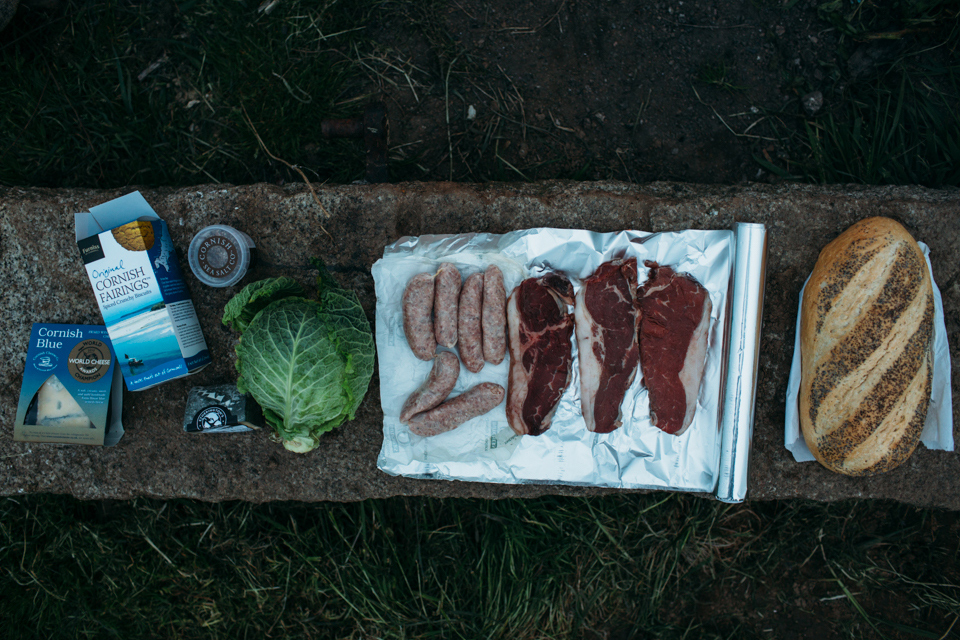
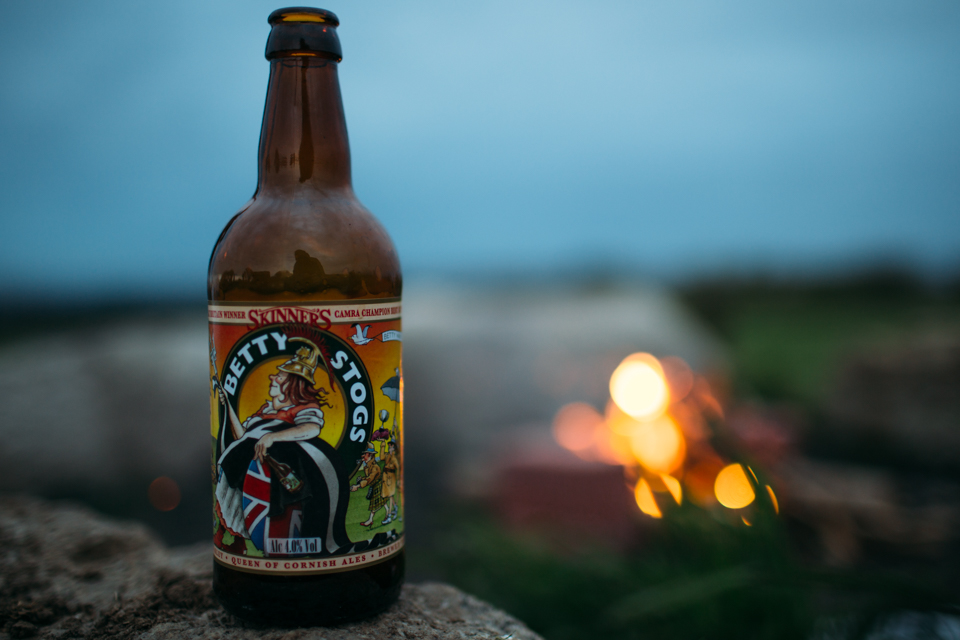
Day 3 | Portscatho - Lizard
“Eateries”
The Hidden Hut
Picnic Deli
The Ferryboat Inn
Ann’s Pasties
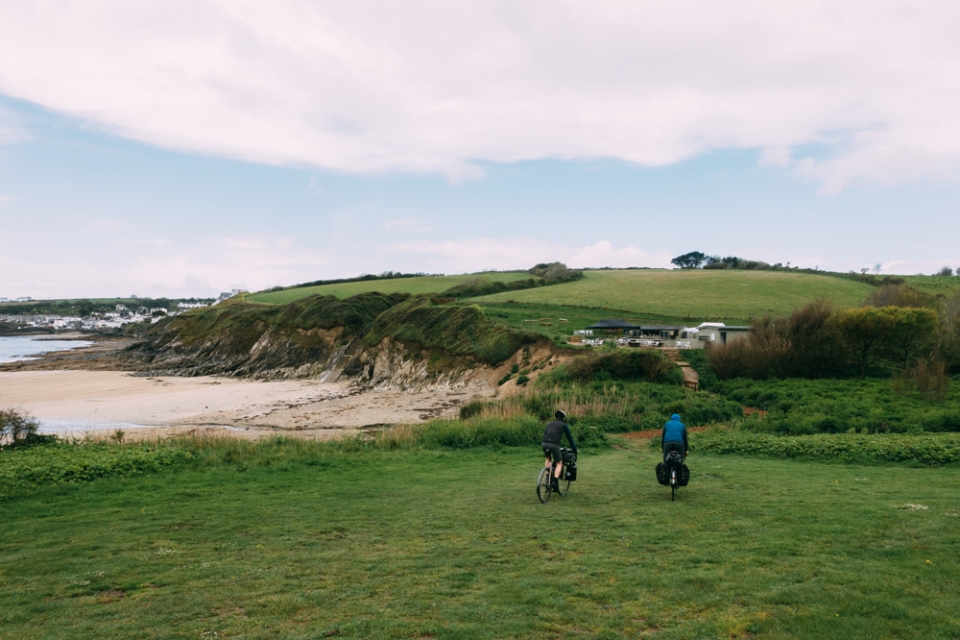
“We are very much al-fresco…all about local ingredients and serving them in an interesting way. For our crab nights, the local crab catchers bring the boat right into the bay, unload and we cook ‘em up. We just serve them with hammers and picks."
Today was a shorter ride, but involved a couple of ferry hops and some exciting eateries. The first of which was The Hidden Hut – amazingly nestled at the back of Porthcurnick beach. We arrived mid-morning, just as they were firing up their cookers and preparing for lunch. Speaking to Dan – the head chef – the best time to come for food would’ve between lunch and early evening but, given the setting, we cared little and were happy to have coffee and a light bite whilst talking to him…
“This is a great spot Dan, but fairly exposed. Do you open all year and in all weathers?”
“We open from when the clocks go forward to when the clocks go back. I also run Tatams in Portscatho which is more of a café in the summer when Hidden Hut is open fully, and then an established pizza place in winter when it is closed…”
“So Tatams is the best place for breakfast then. We originally wanted to arrange our trip around one of your crab evenings, but realised the chances of getting a place were slim!”
“Yeah, it’s crazy, our feast nights are well over-subscribed – we really enjoy them. We have around 1000 places over the month, with around 20,000 people interested. We are very much al-fresco…all about local ingredients and serving them in an interesting way. For our crab nights, the local crab catchers bring the boat right into the bay, unload and we cook ‘em up. We just serve them with hammers and picks.”
We took a second coffee at one of the tables looking out to sea and began plotting our next visit to tie in with one of the Hidden Hut’s summer feast nights. After asking Dan about the huge Asado grill we had spotted to the side of the building, he told us that for their Beef Asado night, they get two local grazing cattle butchered down and cook them for 16 hours, over which the grill needs constant manning to spread the hot
coals. That night would be a good one to get to.
The ride from Porthcurnick Beach to St Mawes rivalled the St Ives coast road for the best riding of the tour so far. Once up on the main ridge road, we could see for miles around knowing that all we had to do was drop down back to sea level for the ferry across to Falmouth. The one off new-build houses on the descent into St Mawes were testament to the desirable port town location.
Our 20 minute ferry crossing was somewhat disorientating as the complicated Falmouth coastline closed in around us, and our tiny ferry scaled against, what looked like, mammoth Royal Navy Support Fleet boats as we passed Falmouth Docks. The next stop was Picnic Deli in the centre of Falmouth, another stockist of a whole host of Cornish produce, to pick something up for our dinner. Assuming that we would arrive in Lizard (the home of Ann’s Pasties) too late in the day, we wanted to pick three up from Picnic and pack them away in our panniers for later. Passionate about Cornwall, Ann has built a “beautifully Cornish” pasty brand that sources the finest ingredients locally: the meat is from traditionally reared cattle that are born and raised on the Lizard peninsula, and the potatoes are grown in Mancannon – a village on the Lizard.
Upon mentioning our ride and timings to the lady behind the counter, she promptly rang Ann up herself to make sure we could pick some pasties up when we arrived in Lizard, at whatever time – a sort of pasty takeaway service. “Thanks so much!” “No worries guys – if you can’t find a pasty, you don’t deserve a pasty. You can’t miss her house and bakery, it is bright yellow and just off the main road in Lizard itself. She said she would leave them on the counter for you.”
"If you can't find a pasty, you don't deserve a pasty"
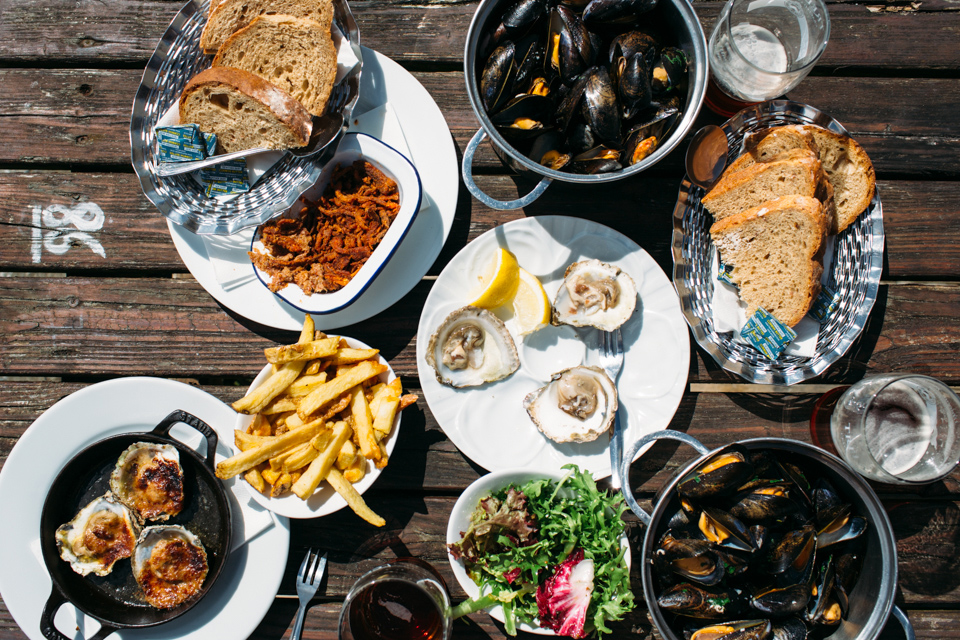
Our final stop before reaching Lizard was The Ferryboat Inn on the Helford estuary; a stunning location sited amongst wooded banks with views straight across the water. The sun had come out for us too. We made this a stop to try some of the famous Helford produce – especially the oysters that are indigenous to local waters and have been harvested for hundreds of years – well known since the 12th Century. Owners of the Inn, the Wright Brothers, serve their very own oysters from the Duchy Oyster Farm just up the river, run a couple of Oyster Houses in London, and supply plenty of others with fresh shellfish, so this was the place to go, if anything for the tiniest food mileage.
As we tried both the naked and cooked oysters and shared the Fowey mussel pots, we scanned the estuary for what we assumed was a large ferry over to Helford but all we could see were the fishing boats heading back to harbour swamped by flocks of seagulls, and a couple of guys messing about in an inflatable dinghy. It turns out that the official Helford Passage ferryman was Steven and his tiny “Taxi” boat that we hadn’t noticed. He was happy to take all of our bikes and us in one crossing – “I’ve had 10 bikes on here before – don’t you worry…” We zipped across in no time.
Getting out of Helford involved some serious climbing but the
tall hedgerows along the single-track roads helped us focus on the task in hand, knowing that Lizard was just 15km away. As we rode south, we began to hit the rolling farmland again and it made for some really scenic cycle touring. At one point, we were riding along talking to a farm hand on his quad bike across the hedge. He was rounding up the cattle with his Spaniel partner: “Yeh, it looks fun, and it is for about a week, but then it gets a bit samey…”
Sure enough, when we arrived at Ann’s bakery, slotted at the rear between two terraces, there was a bag left on the counter for us labelled “Defano”, which we took to mean “Stefan”. Unoffended, and super grateful, we left some money in her Honesty Box and strapped the pasties under the bungee cords for the last couple of kilometres to the Lizard Point YHA – our base for the night. The Hostel was impressively located in the shadows of the distinctive twin towers of the Lizard Lighthouse that mark the most southerly point of mainland Britain. We warmed up our pasties in the communal kitchen and ate them outside in the Hostel garden, looking out at the hypnotic waves crashing over the hazardous rocks off Lizard Point.
Once the natural light went, we rode up to the characterful Witchball pub for a couple of strong Cornish ciders…
"At one point, we were riding along talking to a farm hand on his quad bike across the hedge. He was rounding up the cattle with his Spaniel partner - “Yeh, it looks fun, and it is for about a week, but then it gets a bit samey…” "
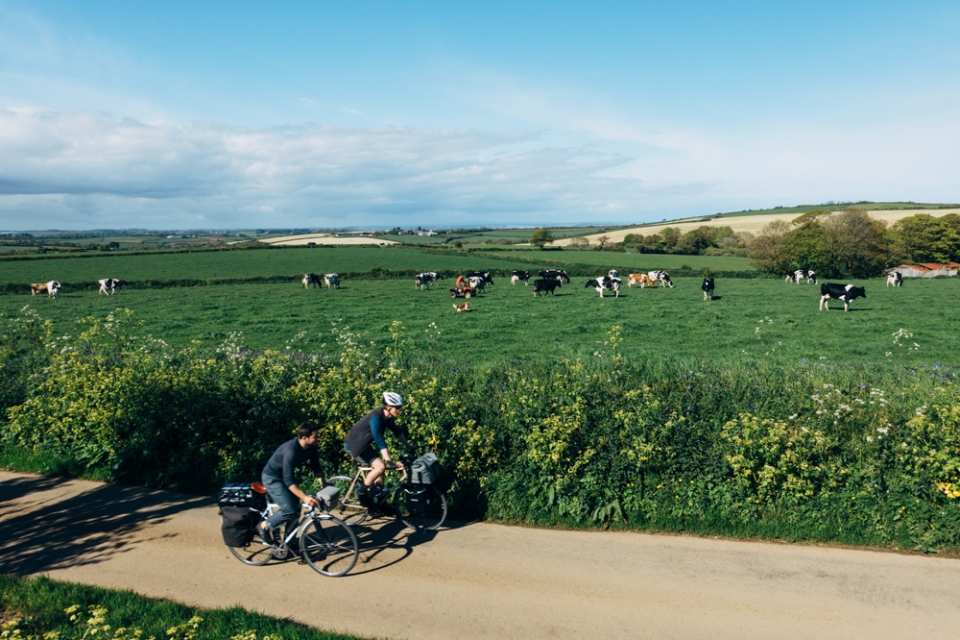
DAY 4 | Lizard – Gurnard’s Head – Penzance
“Wild Food”
Fat Hen Wild Cookery School
The Gurnard’s Head Inn
On a loaded touring bike in Cornwall, leaving 3 hours to ride 30 miles is still a bit touch-and-go. We set off from Lizard at 6.30am the next morning to get over to Gurnard’s Head for a ‘Foraging & Feast’ morning we were booked on – Caroline from the Fat Hen Wild Cooking School had asked us to arrive by 9.30am for an introduction, before heading off on our walk at 10.00am. We made good progress in the warm early morning sun to reach Marazion – clocking 11mph – and knew that from there we only had a short ride over to the north coast, so took the chance to ride the ancient causeway cobbles up to St Michaels Mount whilst the tide was out.
The Gurnard’s Head was a shining yellow beacon for us on the coast as we pedalled hard down off the high moorland; we ended up averaging 10.02mph. Before we knew it, we were sat around a table munching on a variety of wild plants and seaweeds. The Black Mustard plant was knockout, with a really strong mustard/wasabi taste. Given Cornwall’s natural larder, it is no surprise that cookery and foraging schools like Fat Hen, are offering anything from day to week long courses.
"The Gurnard’s Head was a shining yellow beacon for us on the coast as we pedalled hard down off the high moorland...Before we knew it, we were sat around a table munching on a variety of wild plants and seaweeds."
Caroline Davey, owner of Fat Hen, was our guide for the morning and was quick to mention that her Wild Cookery School is named after the common edible plant, rather than poultry. She established her Cornish school in 2007, to teach people to cook with ingredients you can find in the wild – curating these events as a celebration of wild food and cooking and a coming together of people to enjoy the outdoors.
As we began walking through the cliff top grasslands, Caroline talked us through the foraging rules: leave more than you take; ask permission when on private land; don’t uproot wild growing plants (aerial parts of a plant are OK); only forage for personal use; and make sure you know what you are picking. She mentioned the deadly Hemlock Water Dropwart, which looks inviting and very similar to parsley (it is in the same family), as a case in point – it contains neuro-toxins and paralyses humans in minutes…
It is safe to say, we learned a hell of a lot over our three-hour walk, largely along the South West Coast Path:
- Shoreline seaweed foraging is a good place to start because you can eat pretty much anything, it might just taste horrible. Out of about 600 species in the UK, roughly 10 are used in cooking…
- The word Dandelion is from the french for ‘Lion’s Tooth’. You can eat the whole thing, including the root. Some people grind the roots down and use it as a coffee substance.
- Nettles are tasty, with a highly nutritious 40% protein dry weight. Pick them from the underside and fold them from the leaf tip backwards to avoid the sting.
- Wild Spinach (Sea Beet), Samphire, and lemony Sorrell are very common on the Cornish cliff tops and sea fronts.
– Having passed swathes of it for four days, we learned that we should have picked the Cornish gorse flowers to have raw on our food, or infused them in boiling water to make gorse tea.
Charles Inkin, the owner of The Gurnard’s Head, joined us on the walk. It turns out the Inn is part of a group of three, including The Old Coastguard in Mousehole and the Felin Fach Griffin in the Brecon Beacons: all of which strive to offer rural retreats – modern versions of traditional inns – that feed and water travellers before affording them the best night’s sleep they remember. His love for west Cornwall shone through, even if the paintjob hadn’t been that well received by the locals – “It was an iffy pinky grey when we bought it around 10 years ago. We painted it ochre, which faded and we couldn’t get the same paint again, so we thought we would go yellow to match the gorse flowers. It’s like marmite; people love it and people hate it – you should see the complaints letters!”
Arriving back at The Gurnard’s Head with windswept faces, we sat around the table again for a feast prepared with the ingredients we had seen that morning. It was unbelievably delicious – we had a cold nettle soup to start, followed by Newlyn Hake, Cornish new potatoes, asparagus, and sea vegetables.
Soon after the end of the meal, Caroline needed to rush off to start preparing for a whole Wild Cookery weekend event she was organising. Unfortunately, we needed to head off too, on our 10km ride back to Penzance that signalled the end of our tour. As we left the golden gorse and wafts of wild garlic behind us, we had our long train journey back to London to reflect on our last four days of cycle touring in Cornwall – from our first evening cooking deliciously simple mackerel on our cliff top open fire, to the morning spent picking and munching wild Samphire from the coastal grasslands.
"Having passed swathes of it for four days, we learned that we should have picked the Cornish gorse flowers to have raw on our food, or infused them in boiling water to make gorse tea.."
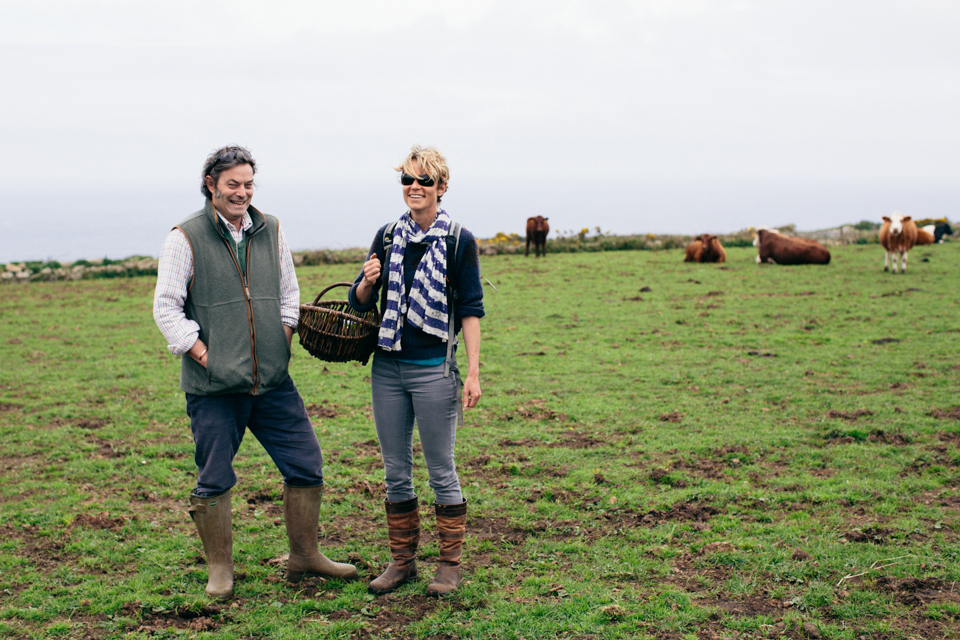
In our minds, The Gurnard’s Head and Hidden Hut typified this Cornish food revolution – as the very best locally sourced and foraged ingredients met talented chefs and friendly food entrepreneurs in the most special of locations. Supported by awesome spots to stay, such as Arthur’s Field campsite, there was a strong cycle touring network in Cornwall. Other than quiet (often single-track) roads, great places to stay, great food, and the odd ferry hop, what more could you want from a cycle tour? Load your bikes with cooking and camping gear and pedal off on a long weekend cycle touring in Cornwall to discover the many producers and eateries for yourself. Harry, Danny and I merely scratched the surface…
